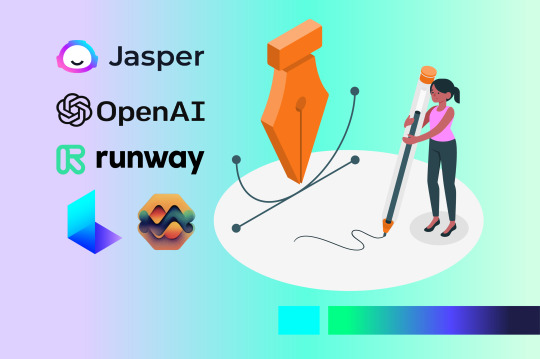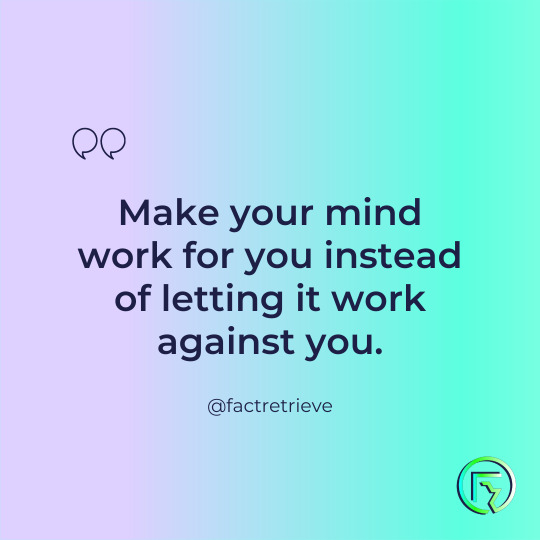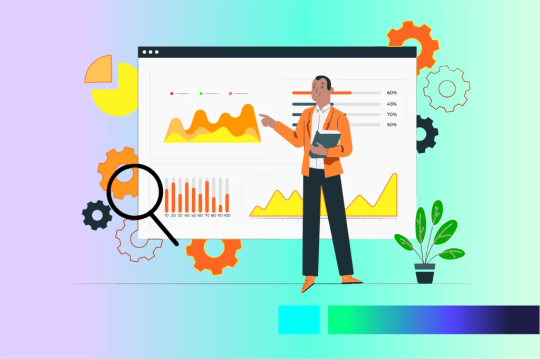A free Online Business resource site to improve your digital business presence.
Don't wanna be here? Send us removal request.
Text
New Employee Onboarding Checklist – How to Create it?

A good employee onboarding process entails far more than ensuring that the new hire has their IT set up and their paperwork filed with HR. If not done correctly, this can be an overwhelming experience for both the new hire and you. Fortunately, you can plan ahead of time and create the ultimate new employee checklist.
Are you wondering what an onboarding checklist is? Then have no fear, this blog is here at your service.
Here, we will help you understand what an onboarding checklist is, why you must create one, and the steps involved in creating one!
So buckle up for this blog and dive right in!
A thorough onboarding process assists new hires in adjusting to their role and team, better understanding job requirements, and preparing them for success. A new hire onboarding checklist is a guidance document that serves two functions. Primarily, it ensures that new employees understand what is expected of them.
Further, it also helps to ensure that employers don’t miss any critical steps during an employee’s initial days, weeks, or months on the job. There are so many phases in this process that it is fairly normal for someone to forget on the way.
Although it might not seem important enough to prioritize, you must remember that around 20% of employee turnover happens within the first six months or less. Consider this when an employee leaves a company, it takes a significant amount of time to deal with their departure. Replacing an entry-level employee often costs around $4,000, according to Glassdoor.
This is why an onboarding checklist is essential for preparing yourself to bring in new staff and groom them to be highly productive.
Why is a new hire checklist important?
Whether your business is small or large, you will have new employees coming on board. There’s no denying that. The main challenge is ensuring that new employees receive adequate orientation and training to contribute effectively to the company.
A new hire checklist consists of two checklists. One is for the hiring manager and the human resources team. The other is for the new hire to follow to ensure they are receiving and performing all necessary tasks.
These checklists are crucial since they aid in the integration of employees into an organization. However, remember that simply having a checklist does not guarantee a successful onboarding process. It is, instead, a tool that assists you in successfully integrating a new hire into your organization, its culture, and its specific role.
A new hire checklist template improves consistency and saves time, especially if you hire new employees frequently. Each recruit contributes to a smoother, more effective onboarding process.
On the other hand, a successful recruit onboarding process leads to greater job performance, increased efficiency, and higher employee satisfaction – all of which contribute to higher engagement and retention rates. In other words, a thorough onboarding process benefits everyone involved.
What an employee onboarding process should look like

Welcoming and Assign a Peer Mentor
A meet and greet and special information session are excellent methods to accomplish this. Also, during the first few weeks on the job, assign each new employee a mentor who will guide them through the onboarding process. This individual will be ready to answer questions, introduce the employee to others in the department, and even assist in training them on specific aspects of the role.
Simple and Informative
An employee should not leave an onboarding activity with a million unanswered questions. Concentrate on providing clear and simple information politely and straightforwardly. Instead of presenting the onboarding process in a pack-it-all-in type of approach, it’s best to keep things simple.
Well Structured
To ensure a smooth running, the onboarding program should be well-structured and well-prepared in advance. To ensure consistency, all new hires should go through the same onboarding procedure, as indicated above. Changing the onboarding process regularly may cause misunderstanding.
Outspread Overtime
It is important to allow sufficient time for learning, contemplation, and conversation. This will prevent employees from being overwhelmed throughout the onboarding process. Instead of attempting to cram everything into one day, divide everything into different segments and stretch them out across a few days, if not weeks.
Download your new hiring onboarding checklist template
Consider including the following points on your onboarding checklist:
✅ Confirm the new employee’s arrival with HR.
✅ Send and complete new hire paperwork
✅ Send an instructive welcome email
✅ Give a copy of the employee handbook
✅ Inform them of company policies
✅ Have their work area set up
✅ Set up accounts and create logins
✅ Organize an office tour
✅ Assign a mentor
✅ Set job expectations
✅ Introduce company culture
✅ Schedule time for onboarding feedback
Depending on your objectives, you may want to add more items to your new hiring checklist. Based on changing needs or employee feedback
It will not only ensure that you and your new team members have a smooth and seamless experience in greeting the new employee, but it will also ensure that the employee gets the most out of the onboarding session.
#freetemplate#humanresources#checklist#onboarding#employeeengagement#hiring#stressfree#welcoming#HRM#process#blogger#businessgrowth#digitalmarketing#factretrieve#emailmarketing#automation
2 notes
·
View notes
Text
Top 5 AI Generator Tools to Better Your Craft

It is becoming more and more frequent for artificial intelligence (AI) to be used in the design sector, and for a good cause. AI generator tools can give various advantages that can hugely benefit designers in their occupations.
From mechanizing repetitive jobs to refining precision and effectiveness, AI can dramatically boost a designer’s workflow and inventiveness. In order to come up with their finest work expeditiously, designers must stay up to date with new tools and resources. AI is already providing new tools that can help designers to better their crafts.
Artificial Intelligence is not a threat to designers, it will just give us more advanced resources and approaches to create our designs. Therefore, if you are currently focused on learning programs like Figma, WebFlow, or Photoshop, I want to discuss some of the new tools you need to be proficient in to stay ahead of the game and make the most efficient designs.
What is an AI Graphic Design Tool?

AI has drastically changed several markets, and graphic design is one of these. AI graphic design tools are applications that use AI algorithms to contribute to the process of making and adjusting graphical representations.
These tools can automate laborious jobs, offer advice on color schemes, arrangements, and looks, as well as develop fresh images depending on user preferences.
AI graphic design tools are prepared to recognize the visual asset that you need and make it available in a single click. This is very helpful for designers and promoters, who don’t need a design background to create visuals that increase brand attraction.
Why You Need an AI Graphic Design Tool
As the need for excellent visual content increases, the need for efficient and time-saving methods also rises. The usage of AI in graphic design tools is becoming more and more popular as it can automate tiresome duties and give designers more time to work on creative projects.
AI algorithms in graphic design tools are the most current development in this area. These algorithms can analyze design trends and suggest enhanced layouts, hues, and other elements improve the overall appearance and success of a design.
Whether you are a professional designer or a business owner aiming to enhance your visual branding, understanding the powers of AI algorithms in graphic design tools can bring a fresh level of productivity to your design process.
Top 5 Designing AI Generator Tools To Boost Your Efficiency
Here are the Top 5 AI Generator Tools that have the potential to revolutionize the design world and enhance how artists create and join forces.
These AI tools can automate monotonous jobs, recommend color palettes, formats, and styles, as well as producing new designs based on users’ preferences.
However, It is important to mention that these tools do not take the place of the creative skills and artistic abilities of a professional designer. They are just there to help designers and make them more efficient and productive, not to replace them.
DALL-E
Astria
Jasper
Luma AI
Runway ML
So, what kind of AI generator tool do you use in your business? Please do share your thoughts and experiences with us! 😊❤️
#openai#aigenerated#artificialintelligence#marketing#automation#digitalmarketing#businessgrowth#designing#FreeTools#3d#trend#strategy#factretrieve#blogger#onlinebusiness
1 note
·
View note
Text
Make your mind work for you instead of letting it work against you.
🌐Fact Retrieve

2 notes
·
View notes
Text
Top 6 Best Data Collection Tools That Make Your Analysis Better

The fundamental necessity for data collecting is to collect high-quality evidence that strives to answer all of the concerns posed. Businesses and management can derive quality information from data collection, which is required to make informed decisions.
The process of gathering, measuring, and evaluating data from various sources to answer research questions is known as data collection. Researchers can use the insights gained from the data collection process to evaluate outcomes, forecast trends, and explore possibilities. Collecting data is the most essential aspect of research for a researcher. The type of data collected may vary depending on the subject of study.
Hence, Collecting data on the relevant information can improve your business workflow. However, you may find the data collection process time-consuming and costly, but proper strategies can make it easier. As electronic media and the internet continue to evolve, online sources become increasingly accessible for gathering data and reusing it for further research and decision-making.
All right, let’s dive in. Today, we’ll show you how to use data collection tools that make it easy to collect different types of data.
What Are Data Collection Tools?
Data collection tools are devices or instruments for gathering data. Different Data collection tools use various techniques as their primary working principles. Not all tools are capable of functioning on all types of techniques. These tools are more developed especially for gathering specific types of information by applying individual data collection methods.
It is important to select data-gathering tools since research is conducted in several ways and for several use cases. The ultimate purpose of data collecting is to collect high-quality evidence that can be analyzed to produce convincing and reliable answers to the questions addressed.
Types of Data Collection
Before delving into the various forms of data acquisition. It is important to note that data gathering is divided into two major categories: primary data collection and secondary data collection.
1. Primary Data Collection
By definition, primary data collection is the collection of raw data at the source. It is the process of gathering original data collected by a researcher for detailed research purposes. It can be divided into two categories such as qualitative research and quantitative data-gathering methods.

Qualitative Method
The qualitative research methods of data collection do not involve the collection of data that involves numbers or a need to be deduced through a mathematical calculation, rather it is based on non-quantifiable elements like the feeling or emotions of the researcher. An example of such a method is an open-ended questionnaire.
Quantitative Method
Quantitative approaches are presented numerically and must be deduced mathematically. A questionnaire with closed-ended questions, for example, might be used to arrive at values to be calculated mathematically. Also included are correlation and regression methods, as well as mean, mode, and median.
Now you may have a brief understanding of what is Primary data Collection and its categories Qualitative research and Quantitative method. Let us look at the different primary data collection methods:
Interviews
In this method of data collecting, The researcher will ask questions to a specified group of people, either directly or via phone or email. It is one of the most prevalent methods of acquiring information.
Surveys
It is a great option to directly ask customers questions. There was a time when you had to hand in paper questionnaires, wait for responders to complete the survey, then manually collect and analyze each one. Fortunately, there are online survey tools that simplify the entire procedure. With online survey tools, you can build surveys in minutes, receive responses in real time, and even evaluate the results using the reporting dashboard. Surveys can be shared using email, social media, or web forms.
Focus Groups
A group of six to a dozen people are interviewed at the same time. A moderator will discuss the topic and lead the discussion forward. The presence of a large number of relevant individuals at the same time can encourage good debate on the subject. It assists the moderator and researchers in uncovering information that they may not have considered previously. As they gather ideas from many sources, the researchers gain a more balanced perspective.
Observation
Direct observation is also a low-cost method of data collection. You must devise an appropriate mechanism for making the observation. Non-responsive participants are not a concern when conducting the simple observation. If the observation does not require interpretation, the model does not necessitate considerable training for the observer.
Polls
Polls are an excellent way to quickly gauge the mood of your audience. They can be single or multiple-choice questions, and because they are usually brief, you can readily elicit a large number of responses. You can embed polls on multiple platforms, and once the responses are collected, you can share the results with the participants to see where they stand in comparison to others.
Social Media Monitoring
Another excellent source of customer data is social media. You can acquire significant insights into your customers’ interests and motivations by learning which other brands they follow, what common features they have, and the kind of interactions they have on forums. The analytics engine incorporated into most social media platforms delivers extensive and organized insights from many sources.
Online Tracking
Your website and mobile app are great places to capture client information. You can gain vital insights into your website visitors’ behavior by collecting over 40 data points from them. This information will tell you how long they spent on the site, which pages they viewed, which areas of the site they clicked on, and so on. You can improve your website and mobile app by better knowing your clients’ demands.
Online Marketing Analytics
Your marketing campaigns can be used to gather a lot of useful information. The marketing tool you use will provide you with information on who clicked on the advertisement, what device they used, when they clicked, where they came from, Demographics, and other details.
Delphi Technique
Here, forecasts produced by specialists in the niche are given to market professionals together with their estimates and assumptions. Depending on the new information that they are exposed to, these experts might change their projections and assumptions. The final demand projection is determined by the collective opinion of all specialists.

2. Secondary Data Collection
Secondary data collection, on the other hand, refers to the gathering of second-hand data by someone who is not the original user. It is the process of gathering already published data, such as books, journals, and/or web portals. It is substantially less expensive and easier to collect in terms of convenience.
There are no specialized methods for this, unlike primary data collection. The researcher collects data from a variety of sources, including the following:
Business magazines
Sales reports
Business journals
Financial statements
Government records
Customer personal information
Distributor feedback
Benefits of Data Collections Tools
When you get your hands on the correct online data-collecting tool, you’ll realize what you’ve been missing. When you don’t have a framework in place, it’s difficult to grasp the potential of these products since their reach is so vast. Below, we will examine some of the numerous advantages that such data analytics technologies provide to businesses of all sizes and stages.
Research integrity: A crucial reason for gathering data, whether quantitative or qualitative, is to guarantee that the integrity of the research topic is maintained.
Decision-making: To reduce the risk of decision-making errors, proper data must be obtained so that the researcher does not make uninformed decisions.
Reduces the possibility of errors: The use of appropriate data collection procedures decreases the possibility of errors.
Saves cost: The researcher will be able to devote time to gathering the necessary data. Otherwise, they may work on the project for months or years only to discover that it is not possible at all.
Supports change: Repeated data collection ensures that you are aware of any changes that may be required or the introduction of new information depending on the data that has been collected.
Here are the Top 6 Data Collection Tools That Help You Make Informed Decisions. Data-gathering apps are an important aspect of doing secure and reliable research. Choose data-gathering software that provides accurate results and a thorough evaluation so you may tweak the data to acquire information. Choose the best data-gathering software to make your data-collection process easier.
#digitalmarketing#dataanalytics#datacollection#tools#automation#decisionmaking#ideas#factretrieve#future#businessgrowth#onlinebusiness
2 notes
·
View notes
Text
The 7 Best Free And Paid SEO Reporting Tools

So, you’re on the lookout for the best SEO reporting tools, huh? Sit back and relax. Because your search ends here. Here are the top 7 SEO Reporting Tools that you can rely on depending on your requirement.
Search engine optimization (SEO) is undoubtedly one of the most necessary marketing skills you can learn. With businesses progressively implementing SEO techniques to improve their page rankings, SEO reporting becomes increasingly important to keep track of the features that are helping your search engine ranking.
However, while certain static aspects can be implemented for SEO, the majority of the metrics in concern are dynamic and must be fine-tuned regularly. With the help of rapid SEO Reporting, real-time analysis of what works and what doesn’t work for your site can be a great way to get the most out of SEO.
Let’s dive in and look at what SEO is and why it’s vital, as well as the finest SEO analysis tools for beginners, in the sections below.
What is Search Engine Optimization (SEO)?
Search Engine Optimization (SEO) is the process of improving the standards of your website based on specific measures used by search engine algorithms to rank higher in web search results. This means optimizing your website so that when individual searches search engines like Google will show it at the top of the search result.
As a result, this could comprise a variety of on-page and off-page factors that need to be improved to rank sites using metrics like keyword ranking, readability, CTR, domain authority, page speed, backlinking, and much more. Enhancing these can help your site rank higher in search results and appear more prominently when a keyword is searched relevant to your business niche.
The Importance of Search Engine Optimization (SEO)
Through SEO analysis, you may acquire a better understanding of your company’s existing organic traffic sources as well as how customers engage with your website.
Without an analytical approach to your SEO strategy, you’re unlikely to develop content that provides direct value to your audience or that Google considers indexable. If you don’t rank for the proper key terms or increase your online authority, you’ll swiftly fall behind the competition.
That’s where SEO reporting tools come in, providing the insights, knowledge, and data you need to keep your search engine optimization approach evolving. The purpose here is to examine your website’s performance and change SEO to benefit your website. As a result, SEO Reporting Tools can assist in fine-tuning this process through active keyword, visitor, and website conversion metrics.
Having the best SEO reporting tool helps you stay one step ahead of your competitors.
#seo#searchengineoptimization#leads#digitalmarketing#marketing#businessgrowth#analytics#realdata#businessautomation#factretrieve#freeandpaid#tools
7 notes
·
View notes
Text
The 9 Best Free Online Survey Tools That Made Gathering Feedback Easy

As a business owner or marketer, what is one of the worst missteps you can make? Having too much faith in your thoughts and opinions. In reality, research shows that there are mismatches between what marketers believe customers want and what customers really want.
Then How? and what is the most effective technique to acquire a true sense of your target market? Conducting online Surveys. You’re surely aware that surveys are one of the most efficient methods for gathering customer feedback. However, creating and distributing them can be a completely different challenge.
Your team could waste days, if not weeks, trying to create a great survey if you don’t have the necessary tools. Even so, the quality and design of your hand-made questionnaire may fall short of professional standards.
Instead, your team requires a survey creation tool to assist them in creating a professional and effective feedback loop.
Why online survey tools?
Customer and employee satisfaction are critical to the success and longevity of most businesses. As a result, you should make it a habit to obtain feedback from these groups regularly to:
Conduct new market research.
Collect feedback on the caliber of your customer service.
Request product feedback from your current or potential customers.
Determine employee satisfaction.
For instance, you can use consumer feedback and use it to give your brand authenticity. Knowing what customers think of your company can help guide important branding decisions and give you ideas on how to best appeal to your target market.
Moreover, learn what your company is doing well and what areas you need to prioritize and work on. Survey results can help you improve your customer experience and influence your marketing decisions.
In addition the fact that surveys can serve as a form of customer engagement if it is implemented correctly. Therefore, to handle it efficiently, we can systemize this using an online survey tool.
The good news is that your company will not have to spend any money to implement this tool. There are numerous free options available to your team for creating a survey.
Pick the nine best free online survey tools you can use to stay on top of your customers’ needs.
#digitalmarketing#factretrieve#business#datacollection#dataanalysis#customerfeedback#onlinebusiness#technology#emailmarketing
7 notes
·
View notes
Text
What is Influencer Media Kit? And Why You Should Create One?

Over the last decade, social media has become increasingly important for businesses since it is actively used by billions of people every day. On the other hand, Influencer marketing is also on the rise. As you can see, prominent brands are sponsoring a significant amount of their marketing budgets to use influencers to promote their brands.
Yes, you read it right! Things are getting serious for influencers.
Why Influencers and Who are they?
Influencers are people who have established a reputation for their knowledge and experience on a specific subject. They generate an enormous amount of followings of enthusiastic, who pay close attention to their opinions by making regular updates about that specific topic on their preferred social media pages and channels. Below shows a few influencers who specialized in their respective subject.
Brands adore social media influencers because they can start trends and persuade their followers to buy the things they promote. However, with new influencers appearing daily, how do you ensure that you stand out enough to receive partnership offers from major brands?
That is when Influencer Media Kit comes to play. If you are serious about creating a profession on social media, you will need to have an influencer media kit, whether you are a blogger, YouTuber, or vlogger.
Right, let’s Dive in!
What Exactly is an Influencer Media Kit?
The influencer media kit is a digital document that gives your clients a proper understanding of you as an influencer, including your work and personality. It’s a chance to expose your accomplishments and showcase your USP (unique selling proposition).
It gives a quick snapshot of your brand and achievements. Essentially, the purpose of your media kit is to show how fantastic you and your brand are. With every picture and every word. It must Highlight what your essence is.
Benefits of Creating an Influencer Media Kit?
Whether you’re a mega influencer or a nano influencer, you’ll need an influencer media kit to show yourself in the best light to big-shot companies. It’s a marketing tool that allows you to promote yourself and ask for collaborations.
Having a proper influencer media kit will help you stand out in influencer marketing, whether a company approaches you about a unique project they’d like to cooperate on or listing to businesses you would like to work with.
It shows brands that you are aware of your figures, that you are committed to your business, and that you are very mindful of your demographics. This will make it easier for you to align with brands that share the same target market as you and the same importance.
By sending your influencer media kit out to bigger brands you are more likely to raise awareness and make yourself visible to larger brands. This also allows you to make connections in the industry and is a vital step in expanding your business.
However, do not forget to consider the 8 steps when Creating an Impressive Influencer Media Kit.
2 notes
·
View notes
Text
Excellent Online Document Editing Software You Can Use Now

As time goes by, technology has overtaken the need for paper documents for safekeeping records, while almost all tech companies and businesses continue to promote working remotely for the past few years due to the spread of COVID-19, to minimize the risk of spreading the virus. However, when the Coronavirus pandemic continues to be a threat, working remotely has become more popular due to its numerous benefits such as:
Save on office expenses made on rent, stationery, utilities, etc.
Better work-life balance
Enables asynchronous working and increases flexibility
Hire a diverse workforce without geographical restrictions
Save commute time for employees and their expenses
Higher Productivity and Reduce unnecessary office meetings and other known time-wasters.
The move towards working remotely has given acceleration to new-age collaborative document editing software that helps teams to connect and exchange ideas like they are in the same room, also to keep up with the changing requirements of their users.
Since plenty of time is spent in the office collaborating on documents, document creation or editing software makes it easy for remote teams to work productively and organize their work efficiently. Let’s see some of the advantages of using collaborative document editing software:
Faster problem solving
Hub for exchanging ideas
Saves time and Improves document workflow
Reduces mistakes and errors
Quick execution of ideas
Less time spent in an email inbox
What is Collaborative Document Editing Software?
All right. Just a brief insight into what collaborative document editing software is. It’s an application that allows employees to view, edit, and work simultaneously and still be able to save the same documents they are working on in real-time, without the need to send emails back and forth.
Document editing or word processors have come a long way. Earlier, when someone mentioned document creation or editing, Microsoft office software was the key player in modern-day computer programs and still plays a major role in the industry. But now it all has changed. Hence, there are several other free and paid software you can consider.
Check out the best document editing software in the market and see which one stands out from the crowd and suits your business.
1 note
·
View note
Text
10 Best Bug Tracking Software of 2022 and Everything You Need To Know

Choose the best bug-tracking software that is suitable for your organization. Software or web-based Applications/services in the daily corporate world has become increasingly convenient for businesses. Although the usage of software has a positive impact this has also led to an increase in bugs and issues.
1 note
·
View note
Text
GraphQL vs REST – Which one is Better and Why?

GraphQL is a successor to REST, the standard way to create an application programming interface (API). GrapghQL is different from REST as it is a query language, rather than an abstraction for network-based software.
GraphQL was developed by a team at Facebook in 2012 and publicly released in 2015. The project was transferred from Facebook to the newly founded GrapghQL Foundation, which the Linux Foundation non-profitably hosted.
The differentiation between REST and GraphQL is that one trip to the server is needed in GraphQL thus it makes the data-retrieving process much faster, and the response is sent back in JSON format. Whereas, when fetching data using the REST model multiple rounds of trips to the server needed to be made to get the required data for the application, which can be slow, mostly on mobile devices.
Not everyone comprehends yet what GraphQL is all about, or why it is increasing in popularity for GrapghQL as a successor to REST APIs. The goal is to provide a brief illustration to anyone who still has not got to know GraphQL and clarify exactly what it does better than REST.
See why GrapghQL is better than REST, and why working with GrapghQL can increase data access and efficiency apart from REST.
3 notes
·
View notes